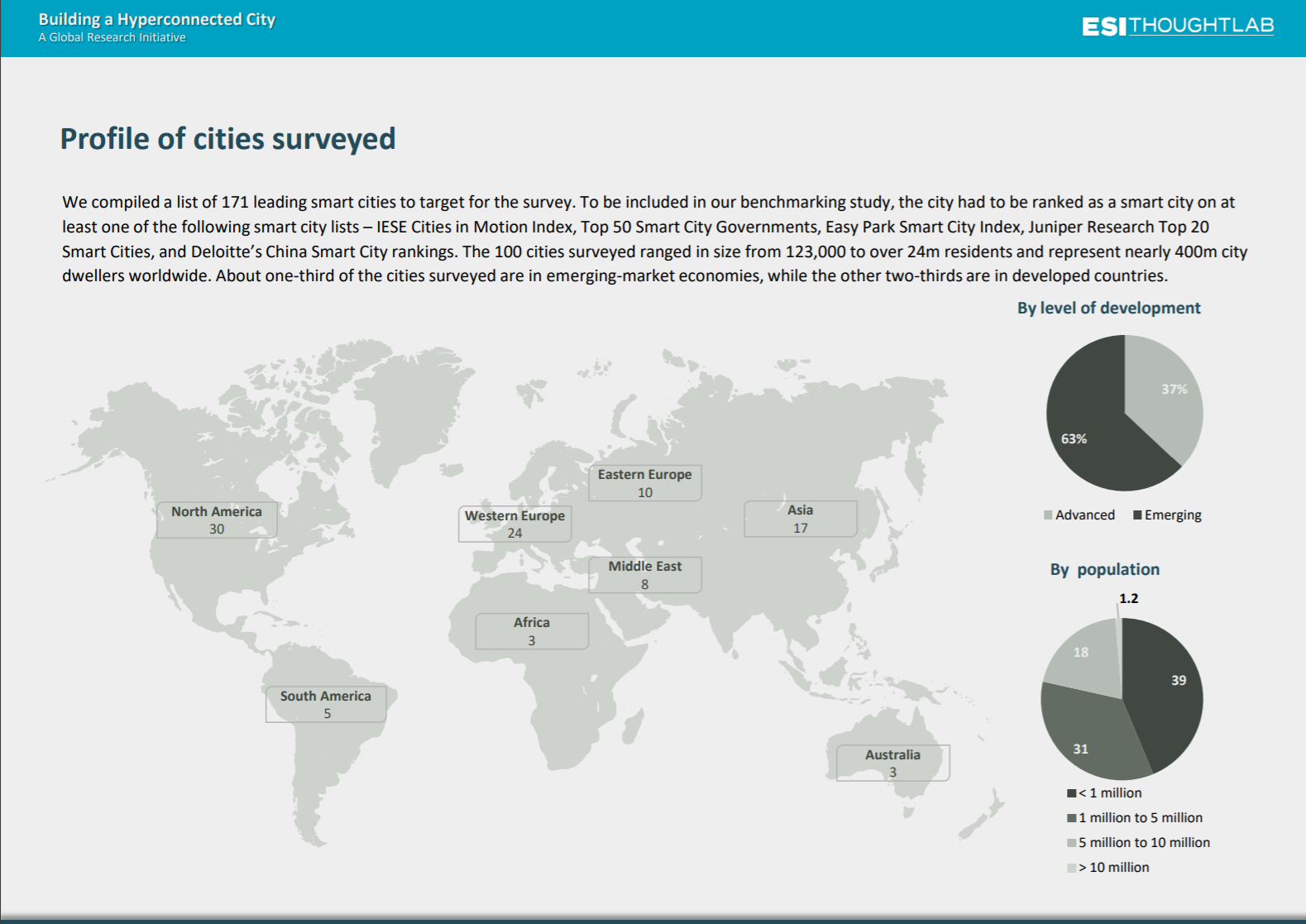-
 Simple and Best
Simple and Best
-
 Simple and Best
Simple and Best


For this Present Value post, we asked our research coalition behind Building a Hyperconnected City to offer their perspectives on the future of smart city solutions. Businesses and residents are embracing technological innovation faster than many cities can reach. These professionals and thought leaders span multiple industries and locations across the globe, providing a holistic view to creating an interconnected urban ecosystem.
Maduabuchi Gerald, Co-founder, Uchald Integrated Ltd: The knowledge gap among investors, regulators, government officials and entrepreneurs. Inefficient business development processes, failure to localize business concepts in line with the people’s culture and social behavior, and inadequate research or studies for workable business plans before business start-ups has resulted in the failure of most business in Africa.
Steve Hamilton, Senior Manager, GPS Risk and Financial Advisory, Deloitte Transactions and Business Analytics LLP: Taxpayers seldom embrace expensive projects whose value they may not recognize, and cities often face budget constraints. The benefits, economic and other, need to be communicated and demonstrated. In communicating the value of these projects, there is tremendous room to experiment with multiple innovative financing models like pay-for-performance, share value capture, social or green impact bonds, various types of public-private partnerships, and data and asset monetization through things like road user charging or smarter curb management. Procurement and innovation models are changing, and we are just beginning to understand both the financial and non-financial opportunities.
Chungha Cha, Co-founder & Chair, Re-imagining Cities Foundation: Finance is absolutely the biggest hurdle. Governments do not have enough capital to fund many smart city initiatives. This results in a diverse range of small smart city projects in “silos” and, in most cases, have failed to ramp up into larger, impactful projects. Governments need to attract private investors, in the form public-private partnerships into large, impactful projects worth investing in and showcasing to other cities to learn and benchmark. And, in order to attract the attention of large private investors, the size of projects need to be US$50-100 million or more. Lessons learned from a smart cities workshop earlier this year and, hopefully, more detailed workshops to understand how we can build “smarter and greener” without over investing so that we can achieve the investment returns required to attract private capital.

Suparno Banerjee, Global Public Sector Lead, Enterprise, Nokia: The first step for a city is to clearly define top priorities, so they will know where to focus their resources. Then key and relevant stakeholders can be brought together around the same table. Their work will include identifying which KPIs will define success, establishing ways to align for common and mutual success, beginning to build a platform that will allow onboarding of innovations and services that can improve the way the city operates and, overall, defining a roadmap of service delivery.
Wayne Best, Chief Economist, Visa: The best thing that residents can do is to engage and participate. Gain a level of understanding of the benefits and balance them against any concerns (security, privacy or otherwise) so that they are contributing to the process.
Wayne Best, Chief Economist, Visa: It will be crucial. At the core of a hyperconnected system is data that is aggregated, processed, and analyzed to deliver insights about consumption, movement and changing trends across a city. Data can be very powerful when applied to anticipate needs in real time as well as provide cities with insight that can help with future planning.
Typically data is quite segmented and decentralized across multiple city agencies, so creating a safe and reliable security design and process of governance to manage privacy concerns across a multi-stakeholder ecosystem is what will ultimately ensure trust in the system.
Xiaoqi Fang, Researcher, Urban Issues, ANBOUND: We hope that through the construction of smart cities, we can leave a wealth of digital assets for the history of human development. Cultural and artistic information is also in the process of rapid digitization. These are valuable urban digital assets that are relevant to future generations. Promoting a city’s history and cultural digital assets will enrich the most critical content platform of smart cities. It will also maintain the vitality of cultural assets in the digital and information age. In the future, smart cities should focus more on the city’s digital assets as a key value point, making them shine in the fields of culture, tourism and urban value.
Bill Baver, Go to Market Leader, Smart World team, NTT Data: Investments in smart technologies that enable less energy usage, reduce pollution and making the environment healthier for ourselves and the generations to follow will significantly help improve citizen health and reduce associated healthcare costs for individuals, employers and cities.
Wayne Best, Chief Economist, Visa: We see digital payments as one of the ways that cities can get creative and innovative in their smart city approach, which in turn helps to attract more business investment, residents and visitors. It really opens up a new frontier for cities all around the world.

 标签 : 智慧城市
标签 : 智慧城市

